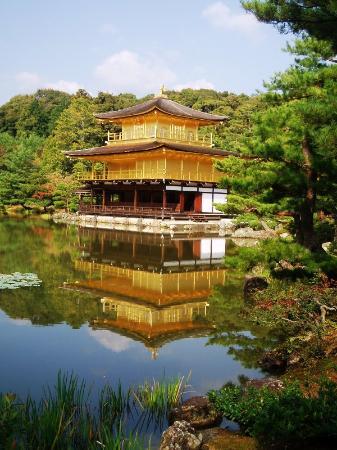Sandscapes of Ginkaku ji
This section of the film focuses on the Silver Pavilion of Ginkaku ji. It suits my purposes over the more popular Golden Pavilion in Kyoto as it describes more directly the phenomenon of Philosophical landscapes. Most people are concerned with the Golden pavilion because of its obvious beauty, a striking golden temple set in the middle of a pond, its still golden reflection a mirrored upturned version of itself creating an uncanny sensation of a floating vision in mid air.
 However in some ways the Silver Pavilion, Ginkaku ji, is no less beautiful despite its subdued presence if compared to the Golden Pavilion. The addition of moss covered grounds and what I would call "sandscapes" - abstract images made with sand and grit give it a unique quality as a Zen temple. They do not represent the landscape or depict a particular landscape but communicate an essence or idea. The cone of sand in the garden resembles Mount Fuji however this is but a surface interpretation. A mountain is seemingly a solid thing ostensibly made of hard rock. However mountains can fall or increase in size with volcanic eruptions. A miniature mountain of sand conveys this state of flux or indeterminateness of things and life which Zen Buddhism teaches. The volume of sand shaped into a cone is held in a state of static but fluid tension which can change with a gust of wind or a heavy downpour of rain and then reconstituted anew. Similarly sand as waves convey the inter penetrability of things. This constant blurring of borders between materials shows the solid but non materiality of an idea given expression in three dimensional space. The essence of Zen Buddhism.
However in some ways the Silver Pavilion, Ginkaku ji, is no less beautiful despite its subdued presence if compared to the Golden Pavilion. The addition of moss covered grounds and what I would call "sandscapes" - abstract images made with sand and grit give it a unique quality as a Zen temple. They do not represent the landscape or depict a particular landscape but communicate an essence or idea. The cone of sand in the garden resembles Mount Fuji however this is but a surface interpretation. A mountain is seemingly a solid thing ostensibly made of hard rock. However mountains can fall or increase in size with volcanic eruptions. A miniature mountain of sand conveys this state of flux or indeterminateness of things and life which Zen Buddhism teaches. The volume of sand shaped into a cone is held in a state of static but fluid tension which can change with a gust of wind or a heavy downpour of rain and then reconstituted anew. Similarly sand as waves convey the inter penetrability of things. This constant blurring of borders between materials shows the solid but non materiality of an idea given expression in three dimensional space. The essence of Zen Buddhism.

Comments
Post a Comment